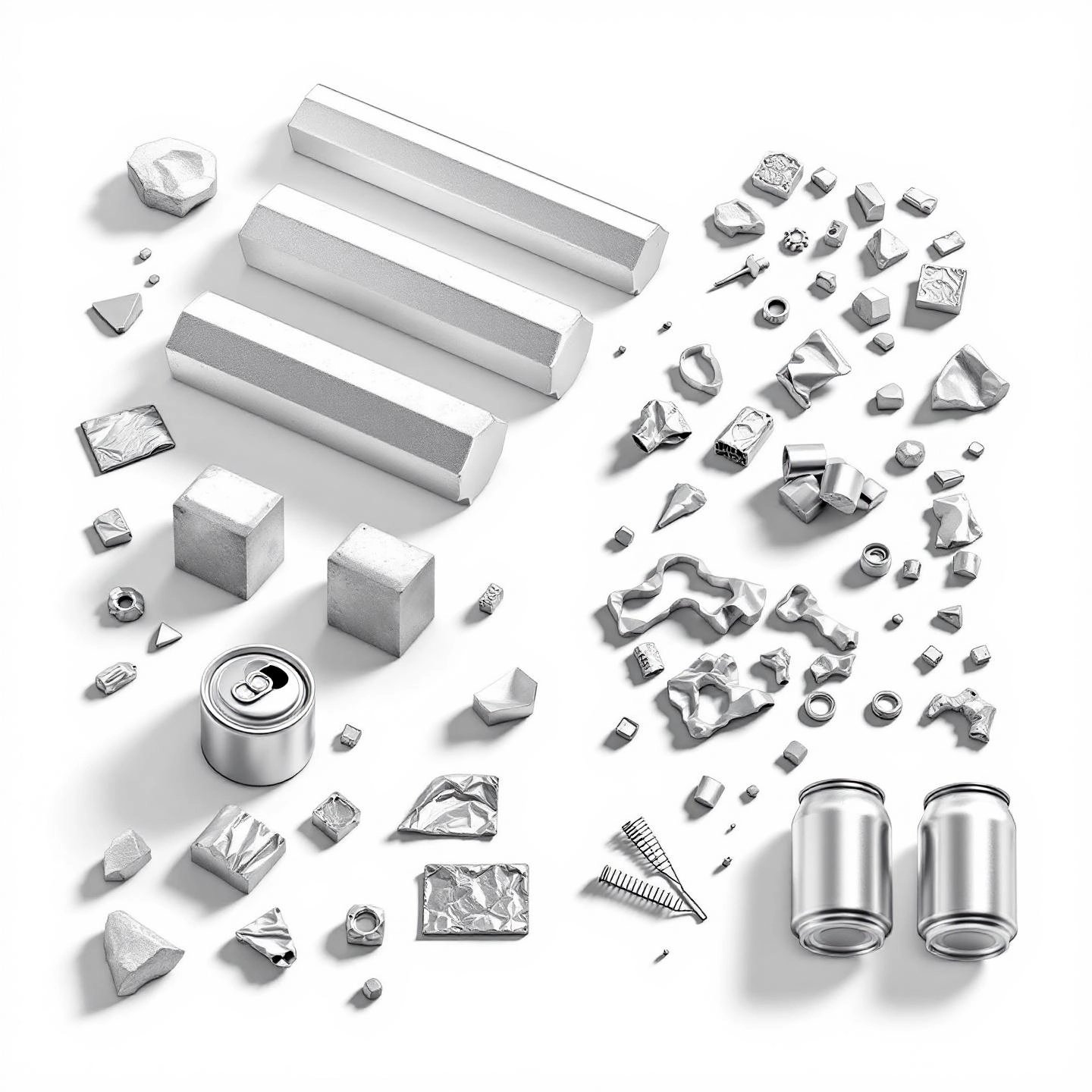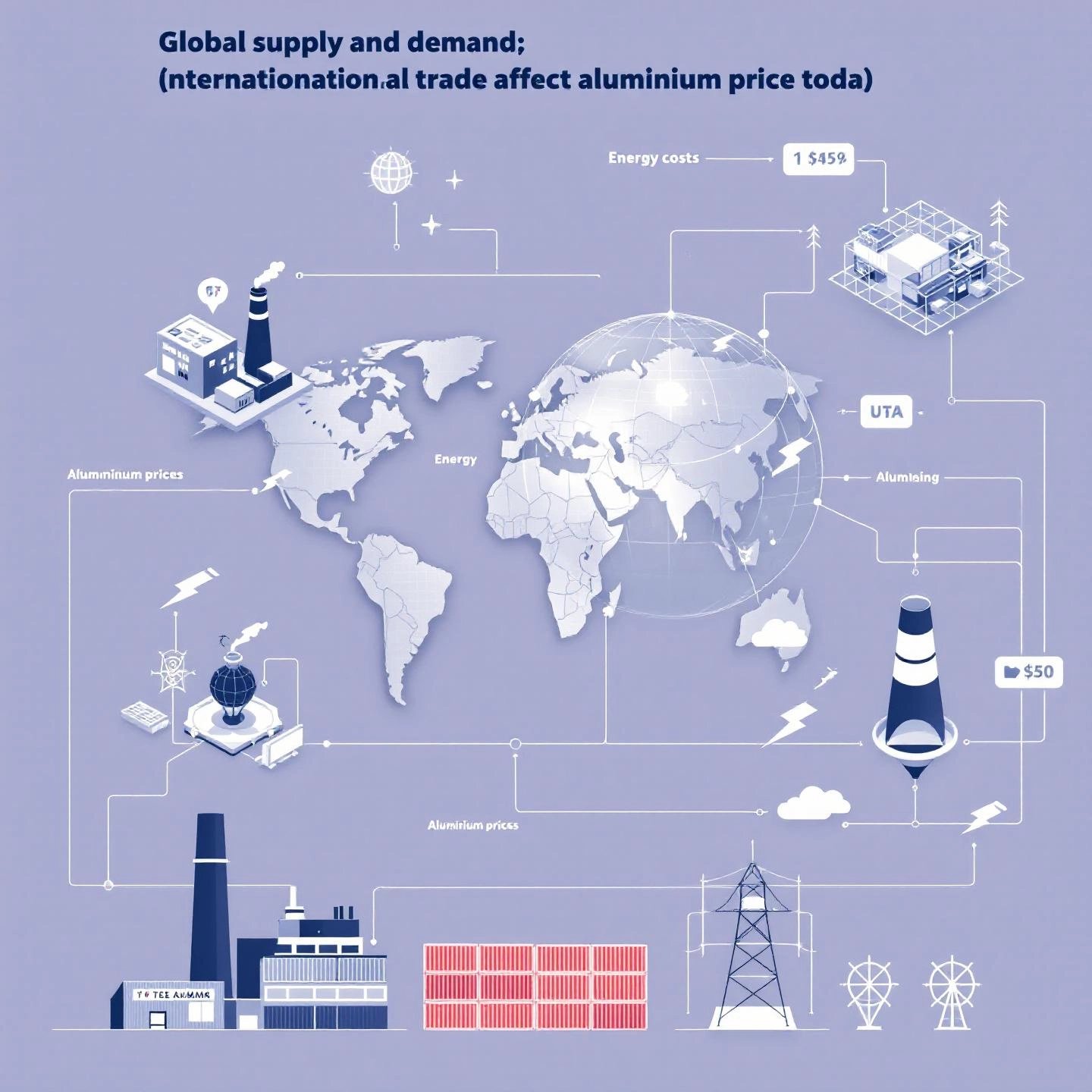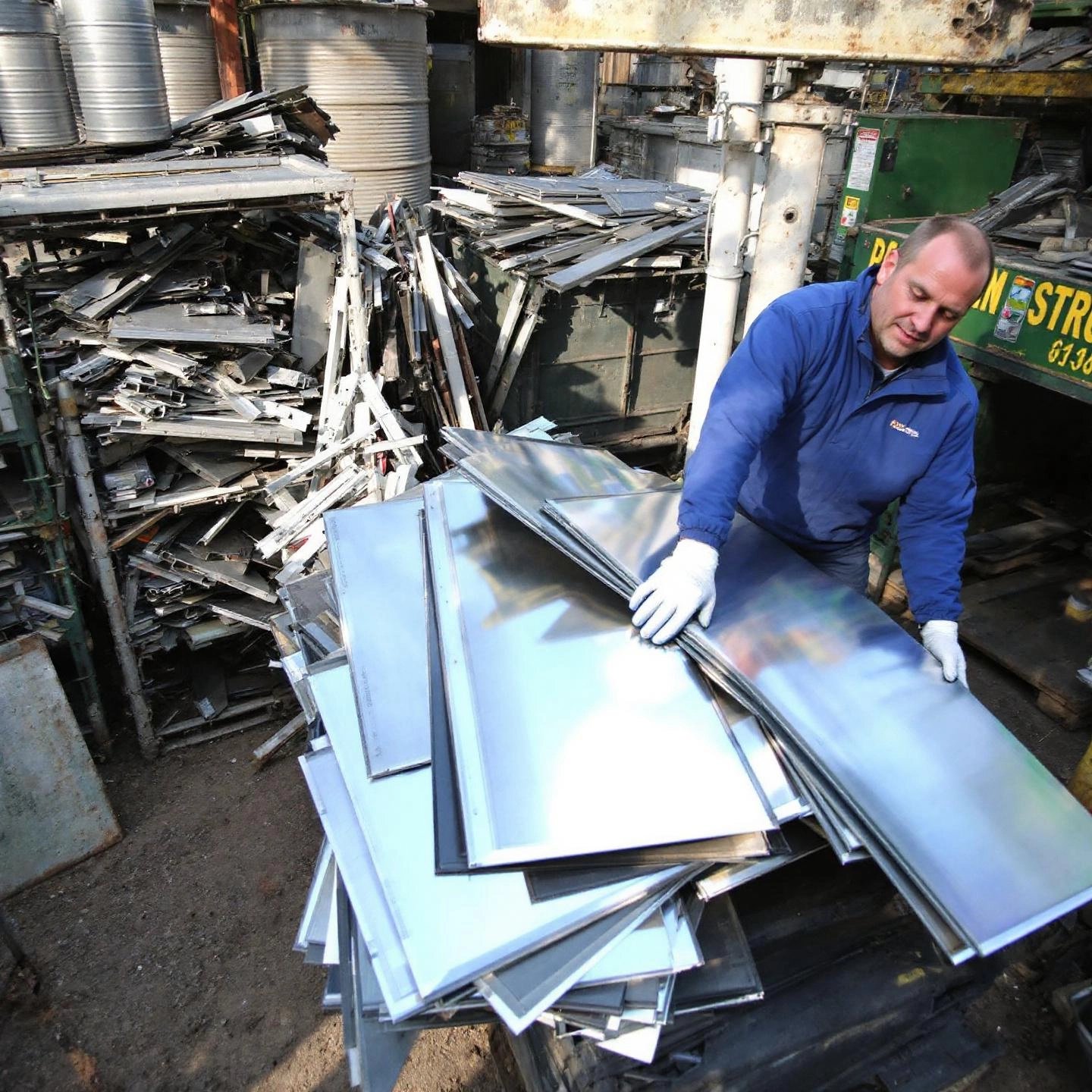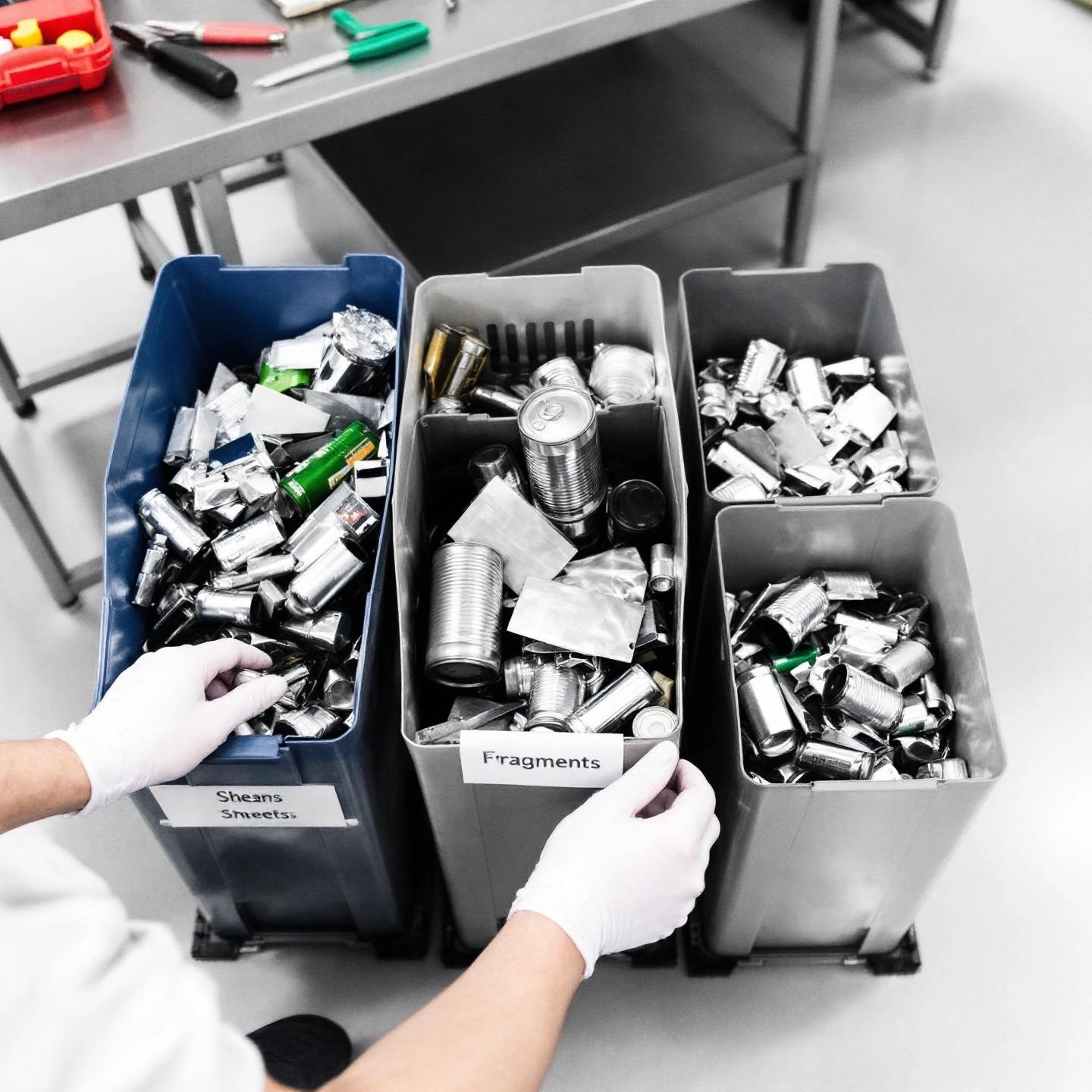
Ever wondered why aluminum prices seem to fluctuate so much, or why the "aluminum price per lb" you see at a scrap yard is different from what manufacturers pay for new metal? If you’re an industrial buyer, a contractor, or even just someone with a pile of cans in the garage, understanding how aluminum is valued can make a real difference in your decisions—and your wallet.
At its core, the aluminum market is divided into two main segments:
Sounds complex? It is—but it’s also highly relevant. Here’s why:
Imagine you’re a small business bidding on a construction project. Knowing when aluminum prices are low can help you secure materials at a better rate, boosting your profit margin. Or, if you’re collecting cans for recycling, understanding what affects the payout per pound can help you decide when and where to sell.
Aluminum isn’t priced in a vacuum. Instead, it’s shaped by a mix of global economics, supply and demand, energy costs, and even the type of aluminum being bought or sold. The price for new, high-purity aluminum ingots will differ from the price for mixed scrap metal, and both are influenced by factors like:
In the chapters ahead, we’ll break down how these forces shape aluminum prices, the difference between market rates for new and recycled metal, and practical steps you can take—whether you’re buying, selling, or just curious about the industry. By the end, you’ll be able to read an "aluminum price chart" or negotiate with a scrap yard with confidence, using real-world knowledge to your advantage. To understand how these dynamics might unfold in the near future, including expert forecasts on potential shortages and price trajectories, read Goldman Sachs' analysis in our featured report: Goldman Sachs Predicts Escalating Global Aluminum Shortage and Soaring Prices in 2024.

Ever checked an aluminium price chart and wondered why prices seem to spike one month and dip the next? If you’re sourcing raw metal for a factory or just curious about what sets the market, you’ll notice aluminum pricing is shaped by a complex web of forces. Let’s break down the main factors that drive the cost of new, or “primary,” aluminum—and how understanding them can help you make smarter decisions, whether you’re a buyer, seller, or industry insider.
Aluminum production is energy-intensive—smelting can account for up to 40% of total costs. When electricity prices spike (due to fuel shortages, regulatory changes, or market volatility), aluminum prices often follow. This is especially true in regions where smelters rely on fossil fuels rather than hydropower or renewables, making them more sensitive to energy market swings.
Not all aluminum is created equal. Industries such as transportation, renewable energy, and advanced construction require precise, high-grade aluminum profiles. As demand for these specialized products grows—think lightweight EV frames or solar panel mounts—manufacturers need reliable sources that can deliver both quality and scale.
This is where large-scale producers like Shengxin Aluminum play a pivotal role. With extensive production capabilities and a reputation for supplying high-tech industrial profiles, companies like Shengxin help stabilize supply chains and meet surging global demand, ensuring that even during periods of market volatility, buyers can secure the materials they need for critical projects.
While forecasts suggest a minor global surplus in 2025, ongoing risks—like concentrated LME inventories, shifting trade policies, and fluctuating energy costs—mean that volatility is likely to persist. Prices may stabilize around $2,500–$2,700 per ton in the near term, but savvy buyers will keep a close eye on both global and regional trends via the latest aluminium price chart data.
Next, we’ll look at how the raw commodity price set by the LME translates into the final cost for finished aluminum products—and what that means for your bottom line.
Ever wondered why the aluminium price per ton you see on global exchanges doesn’t match the price quoted for finished aluminum profiles or extrusions? If you’re sourcing materials for a project or managing a manufacturing budget, understanding this gap can make a big difference in your cost planning and negotiations.
Let’s start with the basics. The London Metal Exchange (LME) sets the global benchmark for aluminum prices. This is the price for high-purity, standardized aluminum ingots—essentially the raw, unshaped metal. As of 2025, LME prices for primary aluminum typically hover around $2,520–$2,530 per ton (or $2.52–$2.53 per kilogram). But if you’ve ever requested a quote for finished products like architectural extrusions or industrial profiles, you’ll notice the price is significantly higher. Why?
Think of the LME price as the base cost—the starting point for all negotiations. Once you move beyond raw ingots, several value-added steps come into play, each adding to the final price businesses pay. Here’s how the cost typically breaks down for finished aluminum extrusions:
This means the final aluminum extrusion price in 2025 generally ranges from $2.50–$3.80 per kilogram for standard profiles, but can be higher for specialized alloys or intricate designs.
Several factors influence how much you’ll actually pay for finished aluminum products:
For projects that demand precise tolerances, complex shapes, or certified quality, working with a leading manufacturer is key. Companies like Shengxin Aluminum combine large-scale production capacity with advanced processing, deep alloy expertise, and flexible finishing options. This means you get not only competitive, project-specific pricing but also reliable delivery and consistent quality—critical for industries like transportation, construction, and renewable energy.
In short, while the LME sets the stage for global aluminum prices, the final price you pay for finished products reflects a blend of value-added processes, market conditions, and supplier capabilities. Understanding this breakdown empowers you to negotiate smarter and plan your projects with confidence. Next, we’ll explore how the secondary (scrap) aluminum market operates—and why recycled metal follows its own pricing logic.

Ever wondered why scrap aluminum prices today can change from one neighborhood to the next, or why some types of aluminum scrap are worth more than others? If you’ve ever stood at a scrap yard counter with a bag of cans or an old window frame, you’ve likely noticed that not all aluminum is treated equally. Let’s break down how the secondary (scrap) aluminum market works, why it matters for both your wallet and the planet, and what really drives the value of recycled aluminum.
Unlike the market for new (primary) aluminum—which is driven by global commodity exchanges and industrial contracts—the scrap aluminum market is far more local and hands-on. Here, value depends on what you bring in, how clean it is, and how easy it is for the yard to process. While new aluminum prices are set in tons on the London Metal Exchange, scrap prices are typically quoted per pound and can fluctuate daily based on local demand and supply (iScrap App).
Recycling aluminum is a win-win: it saves up to 95% of the energy required to produce new metal from ore, reduces landfill waste, and conserves natural resources. It’s also a major source of income for households, small businesses, and even large demolition projects. By turning old products into valuable raw material, recycling supports a more sustainable, circular economy.
Not all scrap is created equal! Scrap yards sort aluminum into categories, each with its own price point. Here are the most common types you’ll encounter:
Imagine you bring in a bag of mixed metal versus a neatly sorted batch of clean, bare extrusions. Which do you think gets a better rate? Scrap yards pay more for:
Conversely, dirty or mixed scrap, or items with non-aluminum parts attached, will fetch a lower price because they require extra labor and energy to process.
So, how do you know what your aluminum is worth? Prices can change quickly based on local supply, global commodity shifts, and even the season. For the most accurate rates, check a scrap aluminum prices chart online or use tools like the iScrap App to compare recent payouts in your area. Remember, the more you know about your scrap—and the better you prepare it—the more cash you’ll likely get in return.
Ready to get the most from your next recycling run? Next, we’ll break down exactly how scrap yards evaluate your aluminum and what you can do to maximize your payout per pound.
Ever wondered why your neighbor gets a higher scrap aluminum price per pound than you, even when you both show up at the same yard? Or why the aluminum price per kg can jump up or down from week to week? The answer lies in how scrap yards evaluate and price each load of aluminum they receive. Let’s break down the key criteria that determine your payout—and how you can use this knowledge to maximize your returns.
Imagine you’re sorting through a pile of old window frames, pots, and soda cans. When you bring these to the scrap yard, each item is carefully assessed. Here’s what matters most:
Want to get the best scrap aluminum price per pound or aluminum price per kg? Here’s what you can do:
By understanding these criteria and preparing your scrap accordingly, you can ensure you’re getting every penny your aluminum is worth. Up next, we’ll dive into the unique value of used beverage cans—and why they often command their own special price in the recycling world.
Ever wondered why a bag of empty soda cans can fetch a different price than other aluminum scrap—or why "aluminum can prices" sometimes seem to march to their own beat? If you’ve collected cans for cash or sorted your recycling, you’ve probably noticed that used beverage cans (UBCs) are treated as a special category in the scrap world. Let’s break down what makes UBCs unique, how their market works, and why "aluminum recycling prices" for cans often differ from other types of aluminum scrap.
Imagine you’re sorting through a pile of scrap: old window frames, cookware, and a mountain of soda cans. What sets UBCs apart isn’t just their ubiquity—it’s their consistent alloy and unmatched recyclability. Here’s why recyclers love them:
Sounds simple? Not quite. While UBCs are highly sought after, their price is subject to unique market dynamics:
It’s not just about the metal—it’s about efficiency. Because UBCs are so easy to recycle and feed directly back into can manufacturing, they typically have a higher market value than mixed or contaminated aluminum scrap. In fact, aluminum cans are considered the most valuable beverage package in the recycling bin, with a value that far exceeds plastic or glass packaging.
With billions of cans recycled each year, UBCs are a shining example of circular economy success. But, as recycling rates fluctuate and market trends shift, it’s wise to stay informed about current aluminum can prices and recycling center requirements. Next, we’ll share practical tips for individuals and small groups to maximize their return when recycling aluminum cans—so you can turn your next bag of empties into the best possible payout.
When you’re collecting aluminum cans—whether it’s a weekend project, a school fundraiser, or just a way to put a little extra cash in your pocket—you want to get the best price for aluminum cans. But with scrap aluminum prices near me changing from yard to yard and week to week, it’s easy to wonder: What can you actually do to boost your payout?
Imagine you’ve spent weeks filling bags with soda cans, only to find out your neighbor got a better rate at the scrap yard. What made the difference? It’s often about preparation and knowing what local buyers want. Here are proven tips, based on industry best practices, to help you maximize your return:
Let’s say you and a friend each bring 50 pounds of cans to different yards. Your friend’s cans are clean, dry, and sorted; yours are mixed with plastic bottles and still sticky with soda. Your friend could receive up to 15–40% more per pound, simply because their load is easier and cheaper for the recycler to process (Okon Recycling).
By following these simple steps, you’ll not only help the environment but also make sure you’re getting every cent your cans are worth. Next, we’ll expand these tips to all types of aluminum scrap—so you can maximize your returns no matter what’s in your recycling pile.

Ever stared at a pile of old window frames, pans, and wires and wondered, “How do I actually get the best scrap aluminum price for all this?” You’re not alone. While cleaning cans is a great start, maximizing your payout for any aluminum scrap takes a little extra strategy—and effort. Let’s break down the advanced steps that can turn your next recycling run into a true win.
Imagine you’re at the scrap yard with a mixed bag of metal. The attendant sorts through it, frowning at the tangled wires, dirty pans, and bits of plastic still attached. Chances are, your payout drops. But with a few key moves, you can flip the script—earning more per pound and making the recycling process smoother for everyone involved.
Still wondering if the extra work is worth it? Check out this table to see how different preparation levels can affect your payout at the yard:
| Scrap Condition | Description | Potential Price Impact |
|---|---|---|
| Clean, Sorted Aluminum | No attachments, sorted by type/alloy, free of paint or residue | Highest price per pound—often 15–50% more than dirty or mixed scrap |
| Dirty or Mixed Aluminum | Contains steel, plastic, rubber, or mixed types (e.g., sheet with cast) | Paid at a lower rate—sometimes 20–40% less than clean scrap |
| Oversized/Unprepared Items | Large frames, tangled wires, or items needing extra processing | May be rejected or paid at a discount due to extra labor required |
| Properly Packaged & Labeled | Organized in bins/bags, clearly labeled, easy to handle | Faster transactions, more accurate grading, and potential for better rates |
By investing a bit of time in aluminum scrap preparation, you’ll not only boost your earnings but also help make recycling more efficient and sustainable. Next up, we’ll show you how to find the best local scrap prices—so all your hard work pays off at the scale.
Ever wondered why your neighbor seems to always get a better deal on their aluminum scrap, or why "scrap aluminum prices near me" can vary so much even within the same city? If you’re ready to turn your aluminum pile into the highest possible payout, it’s time to move beyond simply showing up at the nearest yard. Instead, a little research and a proactive approach can help you find the best aluminum scrap price every time you recycle.
Picture this: Two scrap yards, just a few miles apart, offer noticeably different prices for the same type of aluminum. Why? Local yards set their rates based on their own processing costs, buyer contracts, and even daily or weekly market shifts. Factors like demand from nearby manufacturers, yard overhead, and even recent weather events can impact what you’re paid. That’s why it pays—literally—to shop around before hauling your load.
Ready to maximize your return? Here’s a practical checklist to help you get started:
Imagine you’ve prepared 100 pounds of clean extruded aluminum. Yard A is five minutes away but offers $0.60 per pound; Yard B, a 20-minute drive, is paying $0.70 per pound for the same material. For a $10 difference, is the drive worth it? For many, it is—especially with larger loads. Multiply that by regular recycling trips, and the savings add up fast.
In short, the best way to find the best aluminum scrap price is to treat your recycling trip like any smart shopping experience: research, compare, and ask questions. The extra effort can mean more money in your pocket—and a better understanding of how the aluminum market works in your area. Now that you know how to secure the top local price, you’re ready to make every load count as you move forward in your aluminum recycling journey.

When you first hear about aluminum prices, it’s easy to feel overwhelmed by the constant market shifts, technical jargon, and the sheer variety of products—from scrap cans to precision extrusions. But as you’ve seen throughout this guide, understanding the forces behind pricing isn’t just for industry insiders—it’s a valuable tool for everyone, from individual recyclers to large manufacturers.
Imagine you’re about to launch a new project or clear out a warehouse full of scrap—how will you use what you’ve learned? Perhaps you’ll time your sale when prices are high, or partner with a supplier who understands your unique needs. The more you know about the market, the better equipped you are to make decisions that maximize value and sustainability.
For industrial buyers and manufacturers, working with a reputable, large-scale supplier is crucial. The best aluminum supplier isn’t just one who offers competitive pricing—they provide deep expertise in alloys, consistent product quality, and reliable delivery. Suppliers like Shengxin Aluminum stand out for their advanced manufacturing capabilities, broad product range, and commitment to customer service. This means you can count on tailored solutions, transparent pricing, and a steady supply of both new and recycled aluminum profiles, no matter how complex your needs.
"In a fast-moving industry, knowledge is your greatest asset—whether you’re recycling a few pounds or sourcing thousands of tons. By understanding how aluminum is priced, prepared, and supplied, you give yourself the power to make smarter, more profitable decisions."
Ready to put your new insights into action? Whether you’re selling scrap, buying extrusions, or planning your next big project, staying informed and working with trusted partners will ensure you get the most out of every pound of aluminum. For those seeking high-quality products and a reliable supply chain, choosing a proven leader like Shengxin Aluminum is a smart step toward lasting success in the world of aluminum.
The value of 1 pound of aluminum depends on its type and condition. Clean, sorted aluminum scrap typically earns a higher price per pound—often between $0.50 and $0.70 at local scrap yards—while mixed or dirty scrap may be paid at a lower rate. Prices fluctuate based on market demand, alloy, and preparation, so checking local rates and preparing your scrap properly can help you maximize your return.
Global aluminum prices are set by commodity exchanges such as the London Metal Exchange (LME). As of 2025, the LME price for primary aluminum typically ranges from $2,500 to $2,700 per ton. However, local scrap prices and finished product costs may differ due to processing, regional demand, and supplier factors.
The price per unit of aluminum varies depending on whether you’re buying raw ingots, finished products, or scrap. For new, primary aluminum, prices are often quoted per ton or kilogram on the LME. Finished products like extrusions include additional costs for processing and finishing. Scrap yards typically quote prices per pound or kilogram, which are influenced by cleanliness, alloy, and local demand.
A thousand aluminum cans usually weigh around 30 to 35 pounds. With average can prices ranging from $0.55 to $0.70 per pound, 1,000 cans could earn you between $16 and $24, depending on your region and how well the cans are prepared. Clean, dry, and sorted cans consistently fetch the best rates.
To secure the best aluminum scrap price, sort and clean your materials to remove contaminants, check current rates at multiple local yards, and sell in larger quantities if possible. Using online tools and calling ahead to ask about specific requirements can also help you find the top payout for your scrap.
 Інтернет-сервіс
Інтернет-сервіс 0086 136 3563 2360
0086 136 3563 2360 sales@sxalu.com
sales@sxalu.com +86 136 3563 2360
+86 136 3563 2360